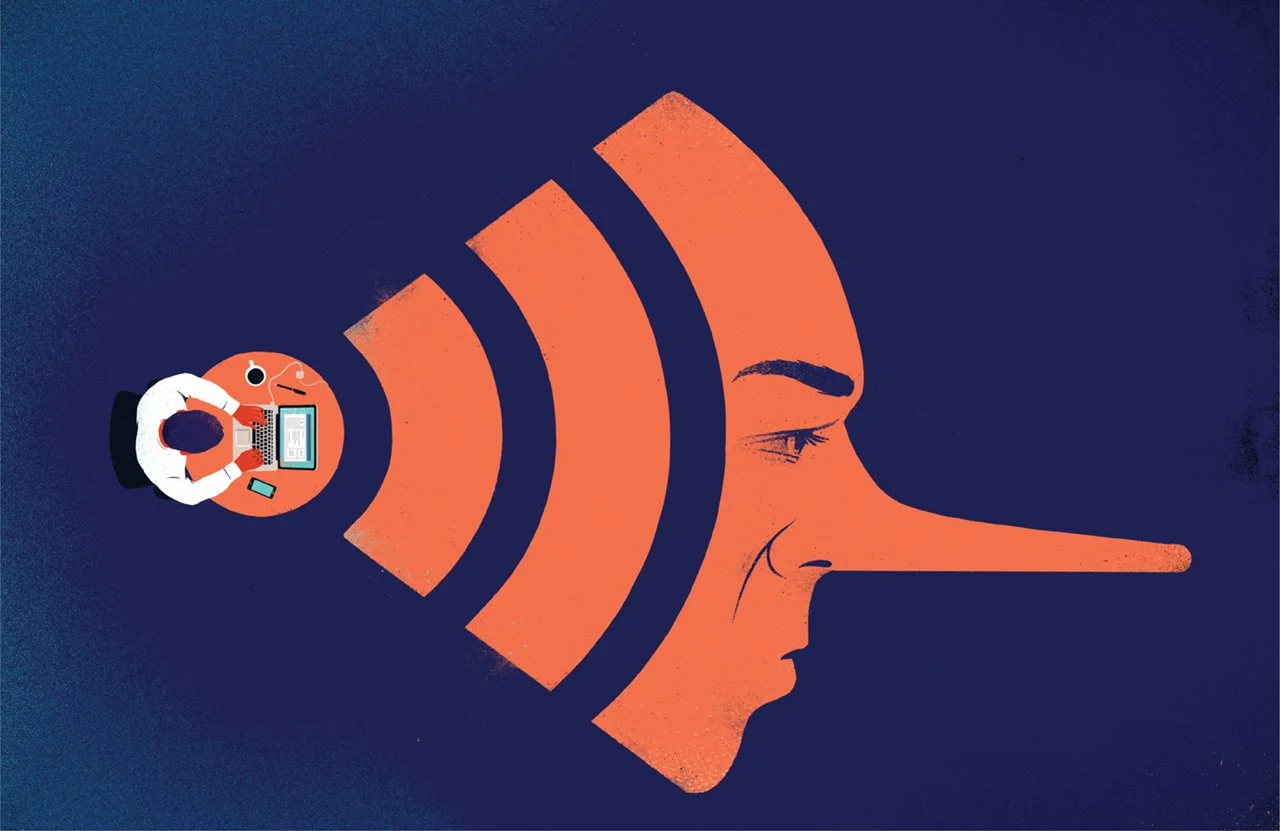Breaking the Fake: How to Spot Misinformation in Today’s Media
The way we consume news has changed dramatically in the last couple of decades. With a constant stream of information from social media, news websites, blogs, and even memes, it's easier than ever to take things at face value and spread misinformation without a second thought. This influx of information is overwhelming and has unfortunately warped our perception of news and objectivity. Let’s talk about how this happens and, more importantly, what you can do to avoid being part of the problem.
The Problem: Too Much Information, Too Little Time
Every day, we’re bombarded with headlines, notifications, and trending topics. Our brains are wired to seek patterns and make quick judgments, which means we’re likely to latch onto stories that confirm what we already believe or evoke a strong emotional reaction. This is the perfect breeding ground for misinformation—half-truths, biased reporting, or outright lies spread quickly because they’re designed to grab our attention.
The result? A distorted view of reality. People become more entrenched in their own perspectives, distrust in reputable sources grows, and genuine objectivity becomes harder to find.
Examples of Falling for Misinformation
Before diving into practical tips, it helps to understand how misinformation can mislead even the most well-intentioned individuals. Here are a few high-profile examples:
Pizzagate Conspiracy (2016) This baseless theory claimed a Washington, D.C. pizza restaurant was the center of a child trafficking ring linked to political figures. Despite no evidence, it spread widely online, culminating in an armed individual entering the restaurant to "investigate."
COVID-19 Misinformation (2020-2021) From false cures to exaggerated vaccine dangers, the pandemic was a hotbed for misinformation. Videos claiming that 5G towers spread the virus led to vandalism and public panic in multiple countries.
The Tide Pod Challenge (2018) Though it started as a joke, viral content suggesting teenagers were eating laundry detergent pods as a "challenge" caused enough concern that companies and health organizations had to issue warnings.
Election Fraud Claims (2020) False claims about widespread voter fraud during the U.S. presidential election led to confusion, protests, and even violent incidents, despite multiple court rulings and recounts affirming the election results.
The Momo Challenge (2019) A hoax about a sinister online character encouraging children to harm themselves caused widespread panic among parents. There was no credible evidence of this challenge existing, but it highlighted how quickly fear can spread online.
Shark Photos During Hurricanes Viral images of sharks supposedly swimming in flooded streets after hurricanes frequently resurface during natural disasters. These photos are often digitally altered or taken out of context, but they consistently capture public attention.
These examples highlight how misinformation can escalate quickly, creating real-world consequences. Being aware of such incidents underscores the importance of critically evaluating information.
The Spread of Fake News: A study from MIT found that false information spreads six times faster on Twitter than the truth, with fake political news being the most widely shared.
(Source)
Practical Tips for Becoming a Smarter News Consumer
The good news is that you can take steps to become more media-literate and ensure you’re not spreading misinformation. Here are some straightforward, practical tips:
Pause Before Sharing Before you hit that share button, ask yourself: Is this true? Does this headline sound too sensational? Taking a moment to reflect can stop the spread of false information in its tracks.
Check the Source Always look at where the information is coming from. Is it a reputable news outlet, a niche blog, or a random social media account? Reputable sources will often cite their evidence and provide balanced reporting, while less reliable ones may rely on clickbait or emotional appeals.
Look for Evidence Reliable news includes evidence. Are there named sources? Are studies, statistics, or experts cited? Be wary of stories that rely heavily on anonymous sources or unverified claims.
Avoid Emotional Traps If a headline or story makes you feel angry, vindicated, or shocked, take a step back. Misinformation is often crafted to exploit your emotions because emotional content spreads faster.
Diversify Your Sources Don’t rely on one outlet or one type of media for all your news. Read from multiple reputable sources, especially those with different editorial perspectives. This will give you a more balanced understanding of any issue.
Verify with Fact-Checking Websites Use fact-checking organizations like Snopes, PolitiFact, or FactCheck.org to confirm whether a story is accurate. These sites specialize in debunking misinformation and can help clarify confusing topics.
Be Skeptical of Images and Videos Technology makes it easy to manipulate media. Reverse image searches and tools like InVID can help you verify whether a photo or video has been altered or taken out of context.
Understand Bias Every news outlet has some level of bias, whether it’s political, cultural, or corporate. Being aware of these biases doesn’t mean dismissing the outlet entirely but recognizing how it might shape the reporting. Tools like AllSides can help you identify the political leanings of different media outlets and compare how the same story is covered across the spectrum.
Why It Matters
Media literacy isn’t just about protecting yourself from misinformation; it’s about being a responsible participant in the digital world. Every time you share or believe false information, you’re contributing to the problem. By taking the time to evaluate what you’re reading and sharing, you help create a more informed, thoughtful, and objective society.
So the next time you see a headline that makes your blood boil or a story that seems too good (or bad) to be true, take a breath, dig deeper, and ask questions. It’s not about being a skeptic for skepticism’s sake—it’s about striving for the truth in an age where it’s harder than ever to find.


